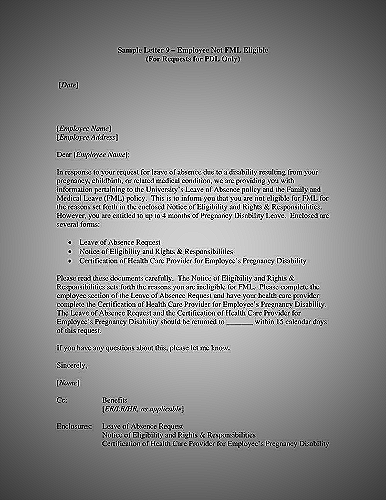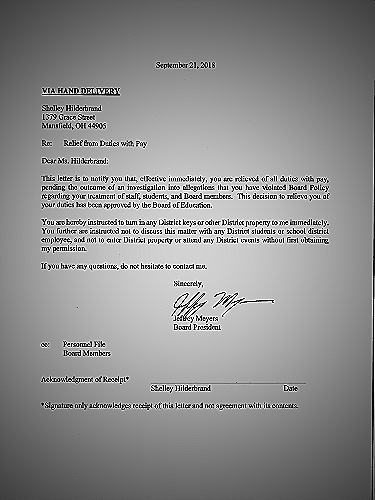2023 Guide to Paid Administrative Leave
Paid Administrative Leave: Understanding What it is and What to Expect
What is Paid Administrative Leave?
Paid administrative leave is the temporary suspension of an employee’s job responsibilities with continued pay during the duration of the leave. It’s usually done as a precautionary measure while the employer investigates allegations of misconduct or other issues related to employee performance or behavior.
When is Paid Administrative Leave Given?
Paid administrative leave is given when an employee is facing allegations of misconduct, harassment, or other serious work-related issues. It’s also given when an employee is a potential threat to themselves, other employees, or the company’s assets.
Paid administrative leave is a means to protect the employer and provide the employee due process.
What Should an Employee Expect During Paid Administrative Leave?
During paid administrative leave, the employee is relieved of their normal job responsibilities and prohibited from entering company premises. They may also be asked to surrender their company-owned equipment, keys, and access cards.
Check out this informative Youtube video titled “What is paid administrative leave and due process?” to gain a deeper understanding of the topic and potential employment problems it may entail.
Understanding Paid Administrative Leave
Paid administrative leave is a term used by employers to temporarily relieve an employee of their usual job responsibilities. This can occur for various reasons including pending investigations, employee’s safety, medical emergencies, or other situations where keeping the employee in their regular job may pose a risk or harm.
During this time, the employee is usually asked to remain at home during regular work hours but continues to receive regular pay and benefits.
Definition of Paid Administrative Leave
Paid administrative leave, also known as home assignment, is a temporary period of leave where an employee is asked to step away from their usual job responsibilities. During this time, the employee remains at home and receives their regular pay and benefits.
Important things to know about Paid Administrative Leave
Administrative leave typically occurs without the employee’s consent or knowledge. The employee is usually informed upon arrival at work or may be called into a meeting with management or human resources.
During this time, the employee may be asked to hand over any company property and will likely be restricted from accessing company systems or places of business.
Advantages and disadvantages of Paid Administrative Leave
The advantages of paid administrative leave are that it can serve as a preventive measure for the employer and protect the employee from any harm that may occur while performing their duties for the company. However, it can also be stressful for employees as they may not understand why they are being asked to step away from their job responsibilities.
In some cases, employees may also experience a loss of reputation, trust, or credibility among colleagues or industry partners.

When is Paid Administrative Leave Applicable?
Paid Administrative Leave is often used in situations where an employee’s continued presence in the workplace could potentially be detrimental to business operations or other employees. It may be applied when an employee is under investigation, but it has not yet been determined whether they have violated company policy or committed any wrongdoing.
In such cases, paid administrative leave allows for a temporary removal of the employee from the workplace until the investigation is complete.
Paid Administrative Leave may also be applicable when an employee is experiencing a personal crisis, such as a life-threatening illness or family emergency, that makes it impossible to continue working normally. In such cases, administrative leave may be granted so that the employee can take time off to deal with their personal situation while still receiving regular pay and benefits.
Scenarios that Warrant Paid Administrative Leave
Below are some common scenarios where Paid Administrative Leave may be applicable:
- When an employee is being investigated for violations of company policy or possible criminal activity.
- When an employee has been the victim of a crime and needs time off to deal with the aftermath.
- When an employee is dealing with a serious personal crisis, such as a life-threatening illness or a family emergency.
- When an employee is unable to perform their job duties due to factors outside of their control (such as a natural disaster or government shutdown).
Explaining the Conditions that Make an Employee Eligible for Paid Administrative Leave
Eligibility for Paid Administrative Leave may initially be determined by HR or other members of the management team. Once it has been determined that Paid Administrative Leave is appropriate, employees will typically be notified in writing, outlining the reasons why they’ve been placed on leave and for how long the leave will last.
Generally, employees must meet the following conditions to be eligible for Paid Administrative Leave:
- They must be employed by the company at the time administrative leave is granted.
- They must be under investigation for suspected wrongdoing or other violations of company policy.
- They must be experiencing a personal crisis or other situation that makes it impossible to perform their normal job duties.
Instances When Paid Administrative Leave is not Appropriate
Paid Administrative Leave may not be appropriate in all situations. Here are some examples of instances when Paid Administrative Leave may not be necessary:
- When an employee is seeking medical treatment for a non-life-threatening illness or injury.
- When an employee has been absent from work for an extended period of time without a valid reason.
- When an employee is experiencing stress or burnout, but does not require time off from work.
The Process of Requesting for Paid Administrative Leave
Administrative leave is a temporary period where an employee is relieved of their job responsibilities. In some cases, employees are given paid administrative leave while they are absent from work.
Here’s what you need to know to request for paid administrative leave:
Documents required to request for Paid Administrative Leave
Before filing a request for paid administrative leave, employees must comply with their organization’s requirements. This includes submitting the necessary documents like medical certificates or letters of appointment, informing their supervisor, and filling out the request form.
These documents should outline the reason for the leave and its expected duration.
How to apply for Paid Administrative Leave
Employees should apply for paid administrative leave by following the procedures outlined by their organization’s HR department. This usually begins by formally requesting for the administrative leave by filling out the required form and then submitting it to the appropriate personnel.
Depending on the workplace regulations, some employees may need to provide documentation supporting their request for leave.
Steps to follow when requesting for Paid Administrative Leave
When requesting for paid administrative leave, employees should follow these steps:
- Inform the supervisor or the HR department of the decision to request for paid administrative leave
- Fill out the required form and gather the necessary documents
- Submit the documents and the form to the appropriate personnel and obtain their signature
- Keep a personal copy of the request

Best Practices When Taking Paid Administrative Leave
Administrative leave, also known as home assignment, is a temporary relief from normal job responsibilities. Employees on administrative leave are asked to remain at home during regular work hours but continue to receive regular pay and benefits.
When taking paid administrative leave, employees should follow their employer’s admin leave request process and talk to HR managers about the length of their absence. Below are some best practices when taking paid administrative leave:
How to prepare for Paid Administrative Leave
Before going on administrative leave, employees should communicate with their team and manager about their absence. They should also make sure to hand off their responsibilities to a colleague or team member, ensuring a smooth transition.
Employees should also review their company’s leave policy and ask HR any clarifying questions about pay and benefits.
What to do while on Paid Administrative Leave
While on paid administrative leave, employees should take care of themselves, mentally and physically. They should use the time to engage in self-care activities, such as yoga, meditation, or reading.
Employees can also take courses or develop skills that can help them in their job role. It’s important that employees do not work during their leave and that they communicate with their employer if there are any changes to their availability.
How to maximize the benefits of Paid Administrative Leave
Employees can maximize the benefits of paid administrative leave by using the time to recharge and refocus. When returning to work, employees should feel refreshed and ready to tackle their job responsibilities.
They can also use the time to reflect on their career goals and set new objectives. By using the time wisely, employees can make the most out of their paid administrative leave and return to work with a positive outlook.
Paid Administrative Leave in the Workplace
Paid Administrative Leave is a type of leave that allows an employee to be temporarily relieved of their job responsibilities while still receiving their regular pay and benefits. However, this type of leave can affect other employees in the workplace, particularly if their workload increases due to the absence of the employee on leave.
This can be addressed by finding ways to redistribute tasks and responsibilities among other employees.
Employers play an important role during an employee’s Paid Administrative Leave. They must ensure that the process is fair and transparent, and that the employee’s rights are protected.
This includes providing written confirmation of the leave, explaining the reason for the leave, and any requirements the employee needs to follow upon their return to the workplace.
However, both employers and employees may face common challenges during Paid Administrative Leave. For employers, this may include difficulties in identifying appropriate tasks and responsibilities for the affected employees, or addressing the potential impact on team morale.
Employees on leave may face uncertainty over their return to work, or other concerns that can make their leave more stressful than it needs to be.

Paid Administrative Leave: Legal Considerations
Paid Administrative Leave is a leave given by employers where an employee is temporarily relieved of the normal job responsibilities but still continues to receive regular pay and benefits. However, there are legal considerations that both the employer and the employee should be aware of.
Overview of laws and regulations regarding Paid Administrative Leave
Employers have the discretion to give Paid Administrative Leave, but they should follow the laws and regulations set by the state, namely the Family and Medical Leave Act (FMLA). FMLA provides eligible employees with up to 12 workweeks of unpaid leave during any 12-month period for certain family and medical reasons, including the care of a spouse, child, or parent with a serious health condition.
Under FMLA, employers with 50 or more employees must provide employees notice of their rights and responsibilities under FMLA. Employers also must maintain the employee’s health benefits and restore the employee to the same or equivalent position upon return to work.
Legal rights of an employee on Paid Administrative Leave
Employees who are on Paid Administrative Leave have the right to be treated fairly and should not be discriminated against. Employers cannot terminate an employee for taking Paid Administrative Leave.
Employees can also use this time to take care of family matters or other personal commitments.
Under California law, employees who have been subject to paid administrative leave have the right to review their personnel files and get copies of any documents relating to the administrative leave.
Legal actions that can be taken if an employer violates an employee’s right to Paid Administrative Leave
An employer who terminates an employee for taking Paid Administrative Leave can be sued for wrongful termination. The employee can file a complaint with the Equal Employment Opportunity Commission (EEOC) or the Department of Labor (DOL) if they believe that their rights have been violated.
The employee can also seek legal action through a private attorney to recover lost wages.
Conclusion
The biggest takeaway from this article is that paid administrative leave is a temporary measure that relieves employees from their normal job responsibilities but allows them to continue receiving regular pay and benefits. It is typically used for review or investigation purposes and can last up to 15 calendar days.
Employers usually have their own admin leave request process, so employees should follow that. They cannot be fired for taking admin leave, and eligible employees can receive paid admin leave based on the employer’s decision.
Ultimately, admin leave is an important tool for employees to care for their mental and physical health or attend to family needs while still maintaining their employment status and benefits.
References
- What Is Administrative Leave?
- Paid Administrative Leave: What It Is, What It Means for You
- Administrative Leave Definition

